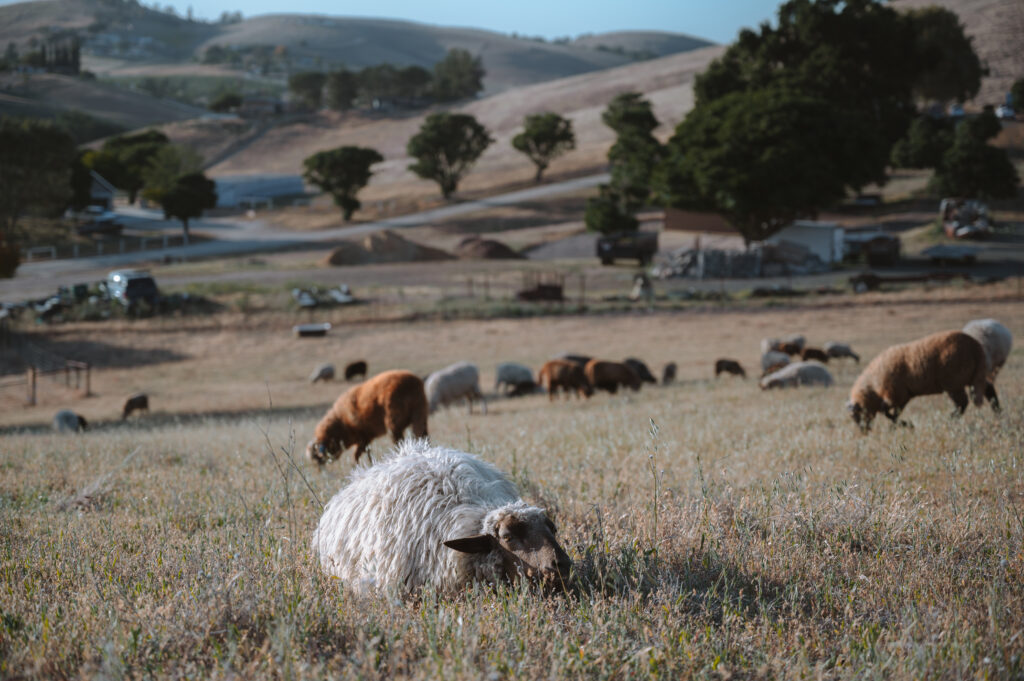Meet Kelsey Karol of Outlaw Valley Ranch
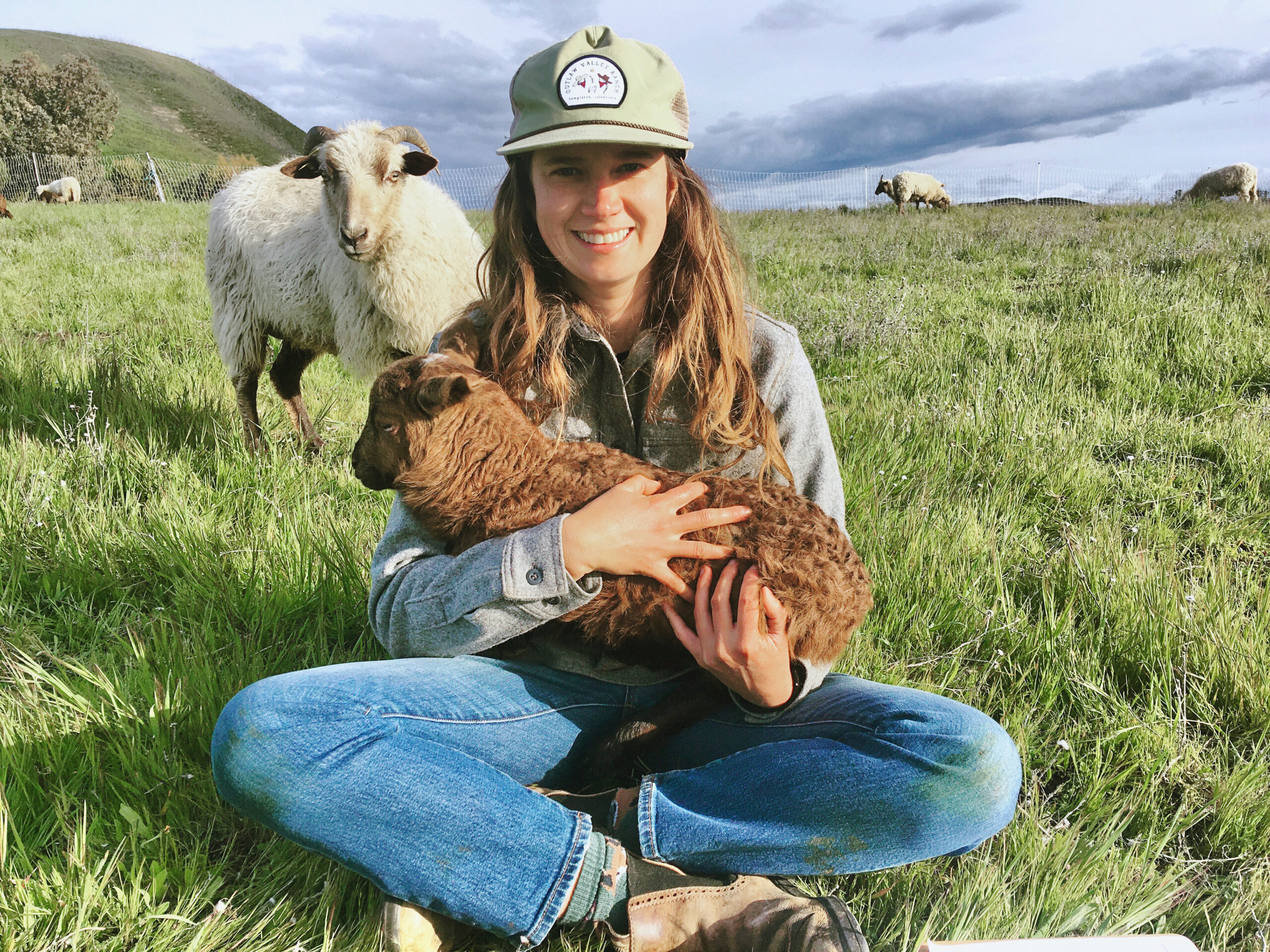
Kelsey Karol was a soft-spoken but engaged presence at the Women for the Land Virtual Learning Circle in the Central Coast in August 2020. Amid that difficult year, she gathered with nearly 20 other women in agriculture over Zoom to discuss the climate-related stressors they were facing. Kelsey highlighted what she and her husband already know to be true: livestock can be part of the climate solution. This knowledge guides what they do at their ranch in California’s Central Coast region, where they produce grass-fed lamb, sheepskin, wool, pastured chicken, and grass-fed beef.
Evolution of Her Ranch

Though a first-generation rancher, Kelsey is no stranger to working the land. She and her husband and business partner, Alex Karol, became fascinated by agriculture working on farms, ranches, and restaurants in the Central Coast. Through their work on local vegetable farms, attending countless workshops and conferences, and later receiving master’s degrees at CalPoly, Kelsey and Alex began to see a vision for what they could do as land stewards to regenerate the soil through rotational grazing and eventually started what is now Outlaw Valley Ranch.
“We started with three sheep, then we got this property and went from there. We still had full-time jobs and were building the flock. We’re still building, and it will probably be a lifetime thing.”
Kelsey and Alex still work other jobs, he as a shearer, and she as a designer, but they hope to one day have employees who can help them shift to full-time focus on their ranch.
“My connection to the land is very deep – it’s why we do what we do. The meat and wool are kind of a byproduct of the system we’re trying to cultivate. We got into livestock because of the amazing benefits it has for the land. That’s really our focus – creating regenerative rangeland, healthy soil, and healthy communities.”
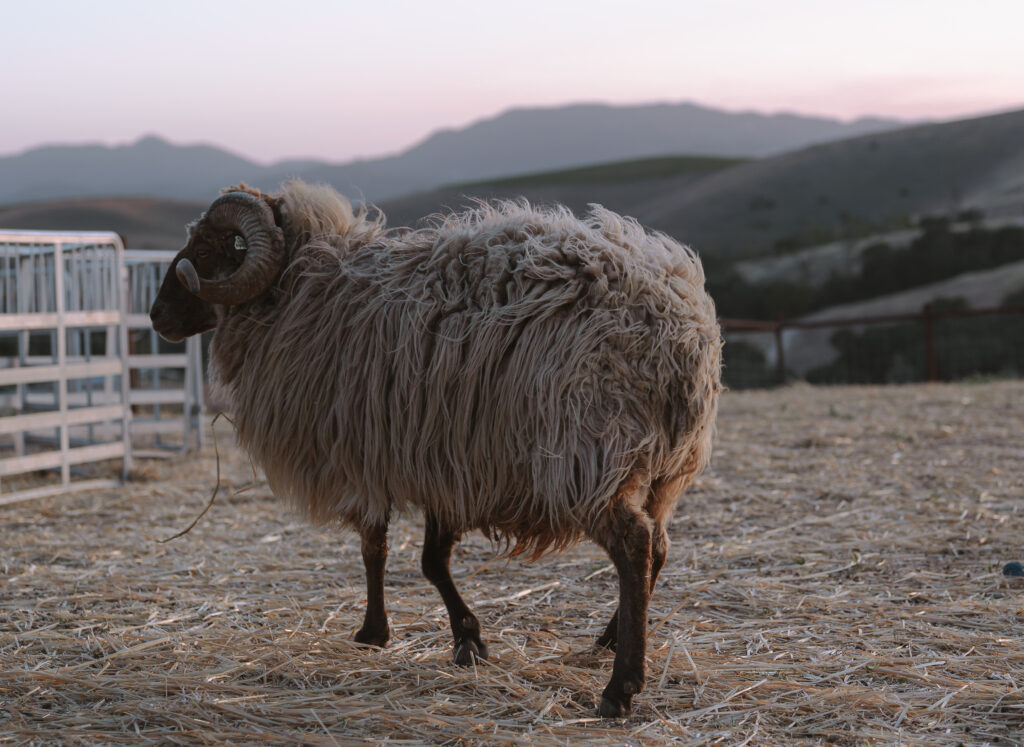
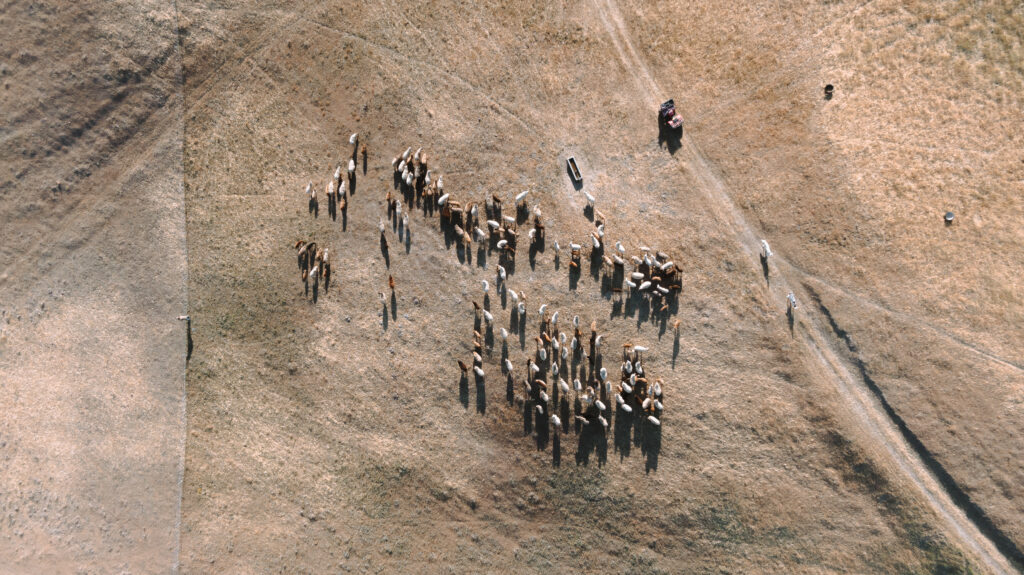
Challenges in the Operation
San Luis Obispo County, where Kelsey’s operation sits, is experiencing extreme drought conditions, like most of California is in 2021. For a ranch like Kelsey’s, this has brought up concerns around water availability, forage production, and feed availability. These are concerns that their pasture-based system is vulnerable to. But given their focus on regenerating soil, Kelsey’s ranch is also poised to be resilient to these climate stressors, since healthier soil can support increased water infiltration and other benefits in the long term.
However, these outcomes take time to manifest, and in the meantime, they need to continue building a viable operation to be able to see the benefits to the land they are seeking. In fact, Kelsey and Alex recently moved to expand their operation, seeking a more temperate climate with more water security. The move helped them integrate more cattle into their operation and diversify their business, but climate change and drought were also key factors in their decision.
Also among her biggest challenges to viability are processing costs and bottlenecks. U.S. Department of Agriculture food safety regulations mean that her animals have had to be processed in an USDA inspected facility, but these are few and far between. This can make the process of getting products to market especially costly and time consuming for small ranches like hers.
“We work so hard to raise these animals and if there’s a bottleneck in that part, it doesn’t matter. I’d love to see more small butchers and local places for customers to find what we do. . . Last year we had to drive five hours to get processed. Right now, all the regulation makes it so that only big guys can do it. We don’t want to transport our animals longer than we have to.”
One bright spot in this challenge is the recent passage of AB 888 in the California state legislature, which will provide an exemption from animal slaughter inspections for mobile operations that provide services for owners of sheep, goats or swine. This policy is poised to help increase the availability of mobile slaughter operations that can serve operations like Kelsey’s so they can continue to manage livestock at a scale that supports the land.
Experiences as a Woman in Agriculture
Kelsey sees a complex picture when it comes to her experiences as a woman in agriculture. “I grew up with two older brothers. I hated being a girl my whole childhood. I pushed myself every day. I cried every day. But I think it made me who I am today so I’m grateful for it.”
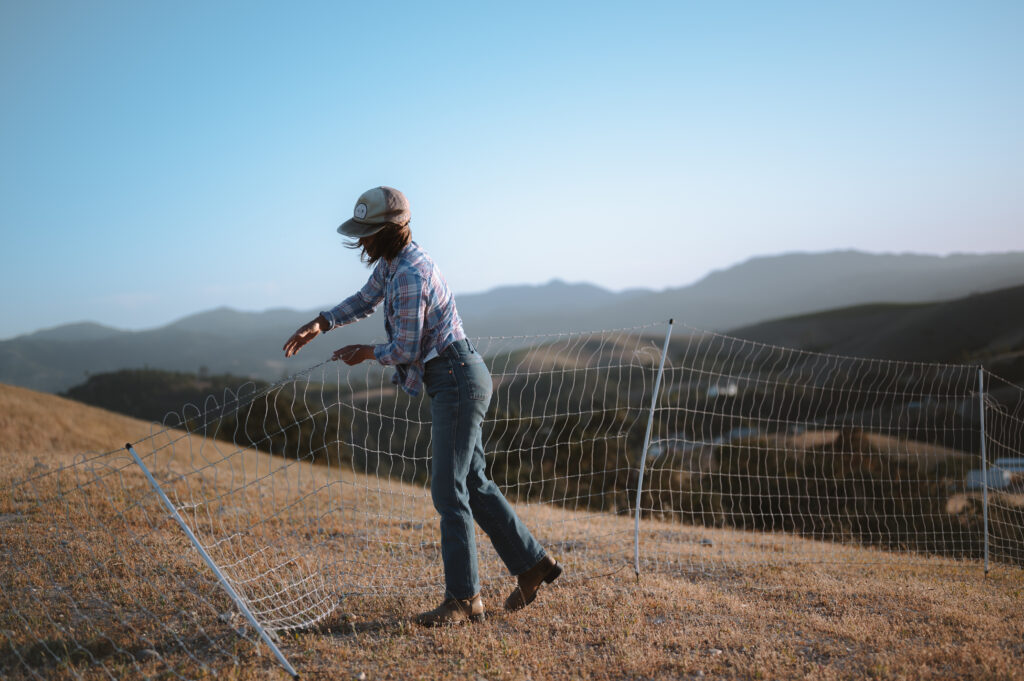
The desire to push herself beyond stereotypes has undoubtedly supported her ability to adapt to the physical demands of ranching. Rather than seeing her physicality as a barrier, she uses each difficult situation on the ranch as an opportunity to develop smarter, more innovative strategies for doing the same thing, particularly if she needs to lift something.
Since embodying her role as a rancher, Kelsey occasionally receives dubious reactions when she explains that she drives the trailer, moves fences, and does really all the hands-on work that ranching involves. Again, she chooses to see these instances as an opportunity to change someone’s opinion of what women can do.
“People will go to my husband first, but some of that is our personalities, it’s not always sexism. . . Sometimes Alex will get invited to speak about what we do, and it seems to be because they just don’t understand how much I do. But I’m trying to get that more out in the open that I’m not just behind the scenes. As long as my husband is not treating me like I’m less-than, that’s all that matters.”

Kelsey says she see the negative ideas about women coming more from people outside of ranching, than from those active in the field. She attributes this to the proliferation of images and stories of ranchers in the media with men at the center.
“It’s just what’s been shown to people – they only see stories of rural agriculture and ranching that are elevated, so they don’t know any better until we tell more stories of the crucial role that women play in agriculture.”
She’s quick to remind people of the historical role of women on the land, as an antidote to this assumption of agriculture as a masculine profession.
“When men went off the farm to the workplace and women stayed home, I think that’s when there was more of a separation between men and women’s roles. So many indigenous societies are dominated by women, and many rural homesteads were partnerships. You ask any ranch family, and they’ll say the women are crucial.”
Importance of Women in Agriculture Networks
It’s through this storytelling and gradual reinforcement that Kelsey sees the broader field of agriculture changing to make room for more people, particularly women coming out from behind the scenes or entering the field for the first time. She perceives more women’s voices being heard, and views this also as an important way to help more women in agriculture connect with each other.
“Our stories are not as told. Gathering is a way to share each other’s stories and I think that something greater comes out of the collecting of all that. Women in agriculture have always been super important, I think we’re just not represented as much as we should be.”
Advice for Others
When asked how she counsels other young women pursuing this path, Kelsey speaks like a true rancher: “Follow your gut. Just keep going, and you’ll find what you want to do in life, who you want to do it with, and it’ll be ok.”
